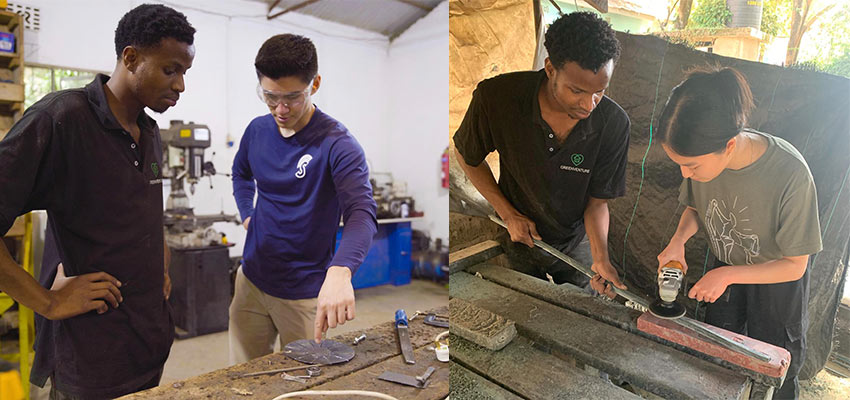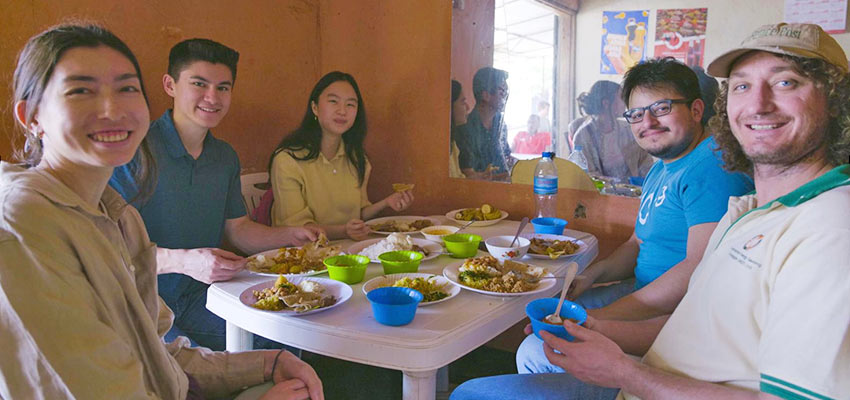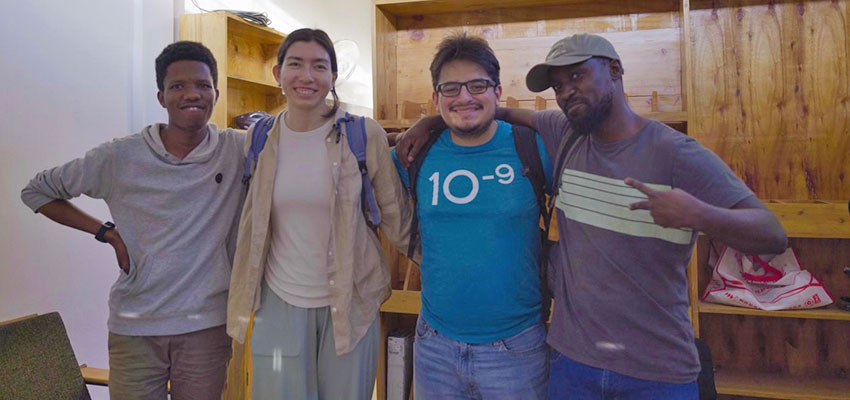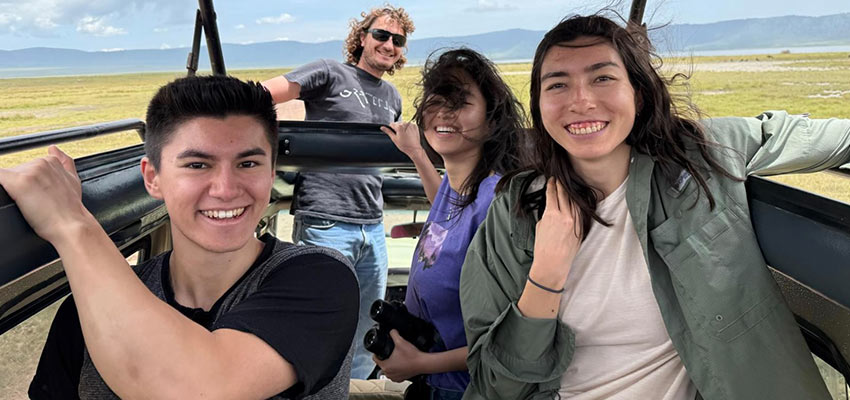
Our D-Lab experience in Tanzania
During the Fall 2024 semester, our team of four students took part in the Hardware Design for International Development class at MIT D-Lab. In January 2025, we traveled to Tanzania with D-Lab Research Scientist Dan Sweeney for two weeks, to work alongside local businesses to design solutions that would make a tangible difference.
Our project focused on two innovative companies, Green Venture and Green Foot, both of which are working toward sustainability in the country. Our experience gave us invaluable insights into the challenges of international development and the power of design in creating lasting impact.
Meet the team
Our team consisted of four MIT students:
● Eric Jaworski, a first-year Mechanical Engineering master's student
● Faith Victoria Ni, a sophomore in Material Science
● Juan Angel Luera, a senior in Computer Science
● Olivia McGrath, a first-year Mechanical Engineering master's student

The companies we worked with
Our team collaborated with two local companies: Green Venture and Green Foot. These companies are at the forefront of promoting sustainability in Tanzania through innovative products.
- Green Venture: This company takes recycled plastic and transforms it into plastic lumber, which is then used to make furniture. Green Venture provides carpenters with a sustainable and more readily-available material alternative to traditional wood. Their focus is on promoting both environmental sustainability and economic opportunity in the region. Learn more here.
- Green Foot Africa: A company developing electric bicycle-powered carts designed for package deliveries in urban areas. These carts aim to provide an environmentally-friendly alternative to traditional delivery methods, reducing fuel use and emissions. Learn more here.
Green Venture: Improving worker health and safety
Eric and Faith Victoria’s main project was with Green Venture, where we focused on improving worker health and safety during the manufacturing process. The company’s main challenge was the excessive amount of plastic dust generated while sanding plastic lumber. This dust was harmful to the workers’ health, getting onto their clothes and into the air.
We designed a dust collection shroud to address this issue. The shroud was attached to the sanding machine and worked in tandem with a fan made from a piece of sheet metal. The fan was powered by the sander itself, and the fan blades directed the dust into a tube connected to the shroud, functioning like a vacuum to collect the harmful particles. This simple design was intended to protect the workers from the harmful effects of inhaling plastic dust, while also keeping the workspace cleaner.
Green Foot: Real-time monitoring and tracking for E-Bikes
Juan and Olivia worked with Green Foot, a company that uses electric bikes to deliver packages. We assisted in creating a system for real-time monitoring and tracking of the e-bikes, ensuring they were operating efficiently and safely. This involved designing an interface that could track battery life, location, and maintenance needs, enabling the company to optimize its delivery routes and improve service reliability. More about this project.

Community engagement: Teaching and sharing knowledge
In addition to our design work, we had the opportunity to assist with D-Lab's design workshops at Twende, a local community-based technology center. Twende’s mission is to support the creation of sustainable technologies and help young engineers develop practical skills. During these workshops, we introduced local kids to the world of programming and hardware design, focusing on Arduino systems. It was rewarding to see the students’ excitement as they learned about electronics and programming, and it was humbling to know that we were contributing to their education.

What we learned
This project was more than just a technical challenge—it also gave us both cultural understanding and community engagement. In Tanzania—their experiences are vastly different from ours—which led us to unique methods of problem solving and learning from each other’s ideas and skills. Our work with Green Venture and Green Foot was not just about applying engineering principles—it was about understanding the unique needs of the communities we were working with and creating solutions that were both effective and sustainable in their specific context.
The experience also emphasized the value of collaboration. Our different upbringings brought a huge range of perspectives, and our success was built on our ability to communicate and combine our expertise. At the same time, our interaction with local engineers and community members taught us the importance of humility and listening, and let us learn from their experiences.
Building for the future
In Tanzania, we had the opportunity to contribute to projects that will have a lasting impact on local communities. From improving worker safety at Green Venture to enhancing the efficiency of Green Foot’s delivery system, we were able to see firsthand how engineering and design can drive sustainability and improve lives. Our time there reinforced the power of collaboration, innovation, and community engagement in addressing the challenges of international development.
More information
MIT D-Lab class: Hardware Design for International Development
MIT D-Lab program: Design for Second Life Innovations
Contact
Heewon Lee, MIT D-Lab Lecturer and Research Associate
Dan Sweeney, MIT Lecturer and Research Scientist

